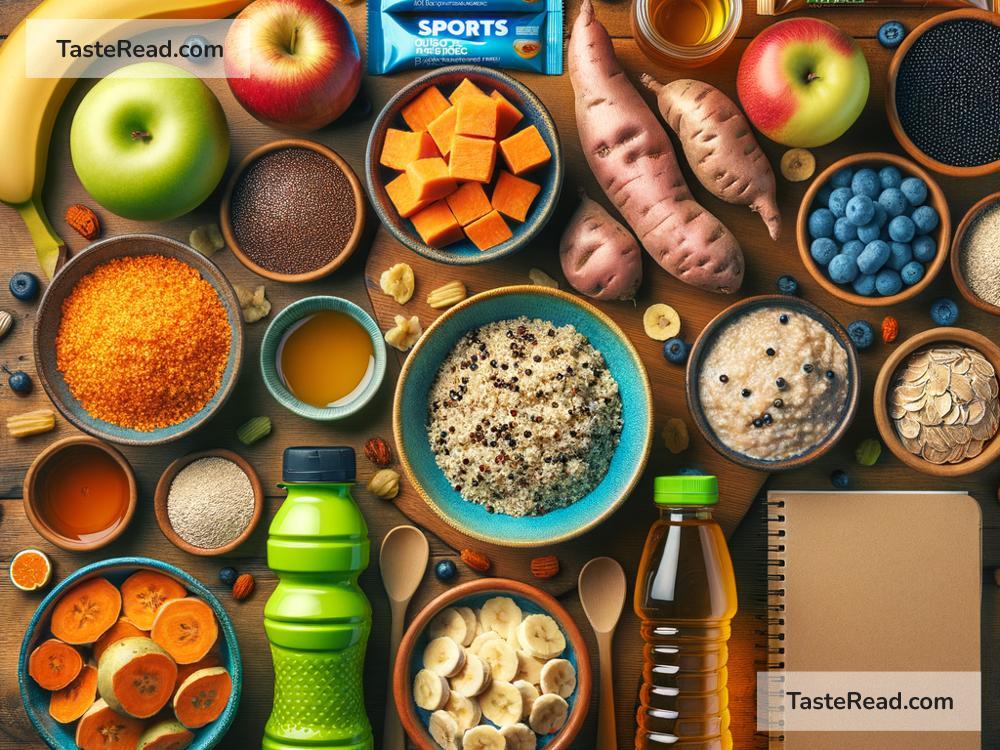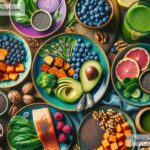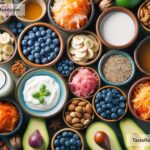Foods That Enhance Glycogen Storage: Boosting Energy Naturally
Have you ever wondered how your body keeps you energized during workouts, busy days, or long walks? The secret lies in a substance called glycogen, which is your body’s stored form of energy. Glycogen acts like a personal fuel reserve, ready to provide energy when you need it most. If you’re into sports, enjoy staying active, or just want to maintain your energy levels, focusing on foods that enhance glycogen storage can help. The good news? It’s not complicated! Let’s explore simple, everyday foods that can contribute to glycogen storage and keep your energy levels high.
What Is Glycogen, Really?
Before diving into the foods, let’s understand some basics. Glycogen is a type of carbohydrate that your body stores primarily in the liver and muscles. Think of it as your brain and muscles’ “go-to” source of quick energy. When you exercise or need a burst of energy, your body taps into its glycogen reserves.
To replenish glycogen, you need foods that break down into simple sugars during digestion, which are then converted into glycogen. A balanced diet, particularly one high in carbohydrates, plays a big role in this process.
Foods That Help Store Glycogen
Now comes the fun part—learning about the best foods for glycogen storage. These aren’t fancy or hard-to-find items; they’re simple, everyday foods that can fit into almost anyone’s diet.
1. Whole Grains
Whole grains like oatmeal, brown rice, quinoa, and whole-wheat bread are excellent sources of complex carbohydrates. These carbohydrates break down into glucose slowly, providing a steady supply for glycogen production. Unlike processed carbs, whole grains also offer fiber, which supports digestive health and keeps your blood sugar stable.
How to use it: Start your day with a bowl of oatmeal or replace white bread with whole-grain options for sandwiches.
2. Fruits
Fruits such as bananas, apples, oranges, and berries are natural sources of quick-digesting sugars, making them perfect for refueling glycogen stores. Bananas, in particular, are a favorite among athletes because they provide potassium along with carbohydrates, supporting muscle recovery.
How to use it: Enjoy a piece of fruit between meals or as a post-workout snack.
3. Starchy Vegetables
Potatoes, sweet potatoes, squash, and corn are fantastic sources of carbohydrates that fuel glycogen storage. These vegetables are also nutrient-dense, providing vitamins, minerals, and antioxidants that enhance your overall health.
How to use it: Roast sweet potatoes or boil some corn as a side dish. Mashed potatoes can also be a filling accompaniment to your main meals.
4. Legumes
Beans, lentils, and chickpeas contain both protein and carbohydrates, making them an ideal food for muscle recovery and glycogen replenishment. They’re also a rich source of fiber, which supports digestion and helps balance blood sugar levels.
How to use it: Add chickpeas to salads, or try a hearty lentil soup for lunch or dinner.
5. Rice
Rice, especially white or brown rice, is a staple carbohydrate that’s easy to digest and effective in replenishing glycogen. Brown rice offers additional fiber and nutrients compared to white rice, but both are beneficial for energy purposes.
How to use it: Serve rice with your favorite stir-fry or as a base for a nourishing vegetable bowl.
6. Pasta
Pasta (preferably whole-grain) is another carbohydrate-rich food popular among athletes for glycogen replenishment. It’s quick to prepare and provides long-lasting energy when paired with the right sauces and protein sources.
How to use it: Prepare a bowl of pasta with a tomato-based sauce and vegetables for an energizing meal.
7. Dairy Products
Dairy foods like milk, yogurt, and cottage cheese contain lactose, a natural sugar that can help rebuild glycogen stores. Plus, dairy products provide protein and calcium for muscle recovery and bone health.
How to use it: Opt for plain yogurt with fresh fruit, or drink a glass of milk alongside a meal.
8. Honey
Honey is a natural source of simple sugars—fructose and glucose—that can be quickly converted into glycogen. It’s especially helpful after rigorous physical activity to kickstart glycogen recovery.
How to use it: Mix honey into your oatmeal, drizzle it on toast, or stir it into a cup of tea for a quick energy boost.
Timing Matters: When to Eat for Glycogen Storage
You might be wondering when to eat these foods for the best glycogen results. Timing is crucial, especially after exercise. Eating carbohydrate-rich foods within 30 minutes to 2 hours after exercise helps maximize glycogen replenishment. Combining carbs with a bit of protein can further aid muscle repair and energy recovery.
Hydration Is Key
Foods alone won’t do the trick unless you stay hydrated. Glycogen storage requires water since glycogen binds with water molecules when it’s stored in the body. Drink plenty of water throughout the day, especially post-exercise, to support efficient glycogen storage.
Final Thoughts
Boosting glycogen storage is all about fueling your body with the right foods, especially carbohydrates. Whole grains, fruits, starchy vegetables, rice, pasta, and legumes are some of the best options for maintaining optimal energy levels. Don’t forget dairy products and natural sweeteners like honey for well-rounded glycogen support.
By focusing on these simple, everyday foods and timing your meals strategically, you can stay energetic, recover faster, and perform better—whether at the gym, school, or work. Your body’s energy “reserve tank” will thank you!
Remember, food is your fuel. So eat smart, stay active, and keep your energy high.


